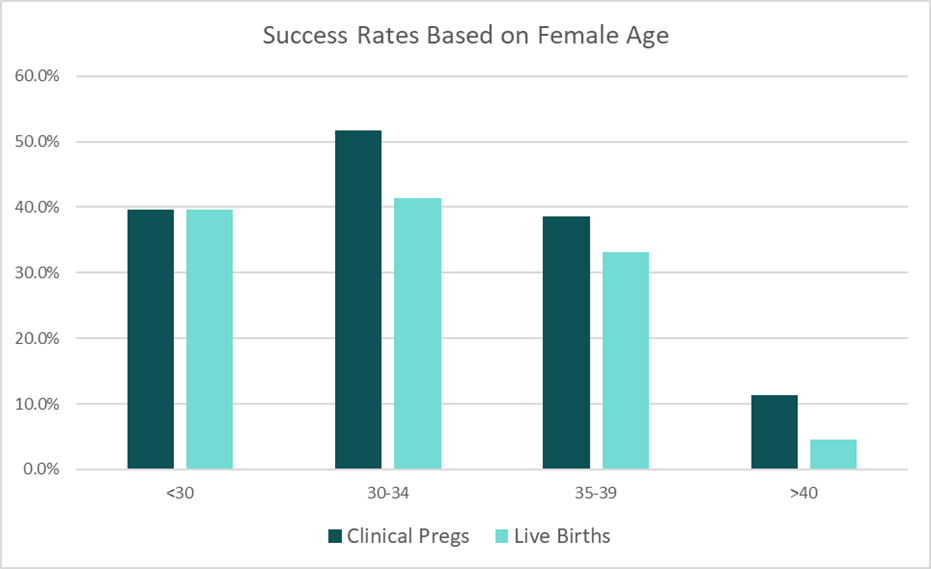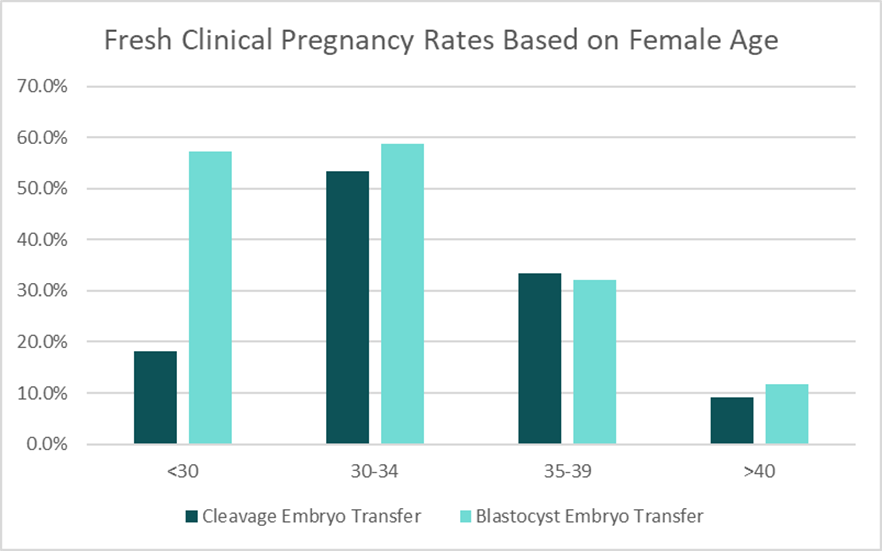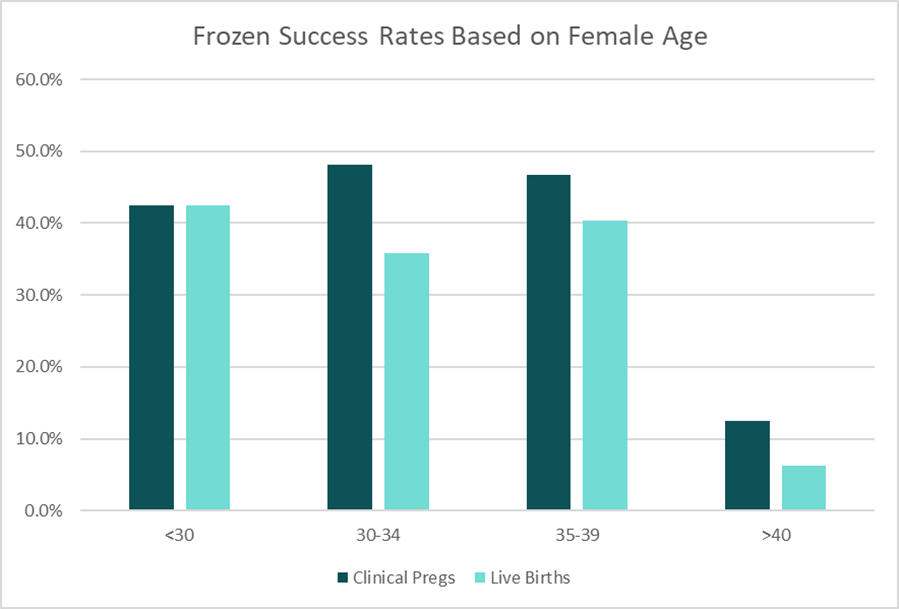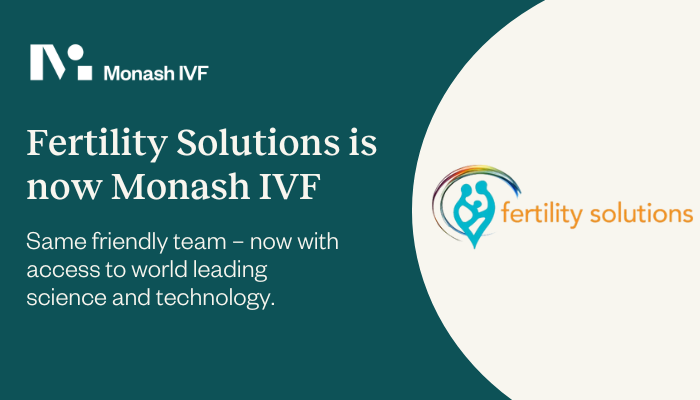The team at Fertility Solutions are committed to offering our patients the best possible chance of success. Our results are on a par with any of the major clinics locally and around Australia, so you can feel confident that when you choose to have treatment with us, you will experience the personalised touch of a small clinic without limiting your chances of success.
Success rates are an important consideration for patients when choosing an IVF clinic. At Fertility Solutions, we believe it is important to provide patients with realistic expectations and information, so that you can make an informed decision about your treatment.
Success rates can be difficult to understand and compare between clinics, due to the different ways that they can be presented and/or measured. The word success can often be defined differently by each fertility clinic and therefore the data can be confusing or misleading if you don’t have a clear understanding on what is actually presented.
Success rates also vary based on a number of broad factors such as age, weight, and cause of fertility. Additionally, not every treatment cycle will result in an egg collection, an embryo transfer or embryos to freeze. Further information can be obtained by speaking with your specialist or referring to YourIVFSuccess.
Terms That Are Used When Reporting Fertility Success Rates
- Biochemical Pregnancy: Refers to a positive serum (blood) pregnancy test (bHCG).
- Clinical Pregnancy: Refers to a pregnancy, as defined by Australian and New Zealand Assisted Reproduction Database (ANZARD) as either the presence of a fetal heart or intrauterine sac on ultrasound, proof of pregnancy tissue via histology, ongoing pregnancy at 20 weeks, or definite ectopic pregnancy that has been diagnosed laparoscopically or by ultrasound.
- Live Birth Rate: Refers to the number of babies born after 20 weeks.
Note: Results are based on our clinic data and are subject to change. Our quality management processes closely monitor our pregnancy rates, which mean that we are continually striving to maintain and improve our success rates.
Reporting Fertility Success Rates
At Fertility Solutions we measure success rates by clinical pregnancy and live births per embryo transfer. This is because only an embryo that has been transferred has the potential to create a pregnancy. It is very important to understand that when viewing success rates, many factors contribute to the chance of you achieving your dream of having a baby. One of the biggest factors influencing your chance of success is female age.
Note: Results are based on women who have used their own eggs and had an embryo (fresh or frozen) transfer between January 2021 – December 2021 within our clinic. Data is based on both Cleavage (Day 2/3) & Blastocyst (Day 5) embryo transfer.
Success Rates With Different Cycle Types
Although the science performed in all levels of service are the same, one difference from a patient’s perspective is the choice of which day they wish to have their embryo(s) transferred.
For a patient choosing Bulk Billed* treatment , an embryo transfer is performed on Day 2 or Day 3 of embryo development (days after the egg collection) known as a cleavage embryo transfer. Alternatively, customised and donor patients have the choice to proceed with a Day 5 (blastocyst embryo) transfer.
A patient who has a Day 5 embryo (blastocyst) transfer, can show an increased chance of pregnancy when compared to Day 2 or 3 embryo (cleavage) transfer. This trend is observed amongst most age groups.
Note: Results are based on women who have used their own eggs and had a fresh embryo transfer between January 2021 – December 2021 within our own clinic.
Fresh vs Frozen Embryo Transfer Results
During an IVF treatment cycle, a patient may have an embryo transferred during that cycle (referred to as a fresh embryo transfer) and/or embryos frozen at the blastocyst stage and transferred in a subsequent cycle (referred to as a frozen embryo transfer). It is currently proposed that frozen embryo transfers may offer slightly higher success rates due to the ability to transfer an embryo in a patient’s natural cycle or non-stimulated cycle. It is thought that the stimulation drugs used during IVF treatment can affect the cells in the uterus in some women.
At Fertility Solutions we freeze (vitrify) all suitable embryos on Day 5 or 6 and expect 90-95% of embryos that are frozen to survive the freezing/thawing process. Unfortunately, not all embryos are suitable for freezing. For those patients who have a frozen embryo transfer they can expect to have a 12.5-48.1% for a clinical pregnancy and 6-42% chance for a live birth depending on female age. Refer to the below graph for results on Frozen Clinical Pregnancy and Live Births Based on Female Age.
Note: Results are based on women who have used their own eggs and had a frozen embryo transfer between January 2021 – December 2021 within our own clinic. Data is based on both Cleavage & Blastocyst embryo transfer and on the age of the embryo at time of freezing.
Live Birth Rates Based on Female Age
Unfortunately not all pregnancies, even those conceived naturally, will result in the birth of a baby – with the natural miscarriage rate being around 25%. Although IVF treatment can help reduce some of this loss, it cannot be completely eliminated. One of the main reasons for miscarriage is genetic abnormalities in the embryo, such as an incorrect number of chromosomes. Unfortunately as a woman ages, so do her eggs subsequently increasing the incidence of genetic abnormalities within the egg or embryo. For more information on this refer to Genetic Testing of Embryos.
Our current data does not include any embryos that have been genetically tested, which could enhance these live birth rates. Therefore based on our data, the chance of you taking home a baby after treatment ranges from 4.5%-41.4%, depending on female age.
Note: This data is based on our clinic results and on women who have used their own eggs and had an embryo (Fresh or Frozen) transfer between January 2021 – December 2021 within our clinic. Additionally, this data is on both cleavage and blastocyst embryo transfer.





